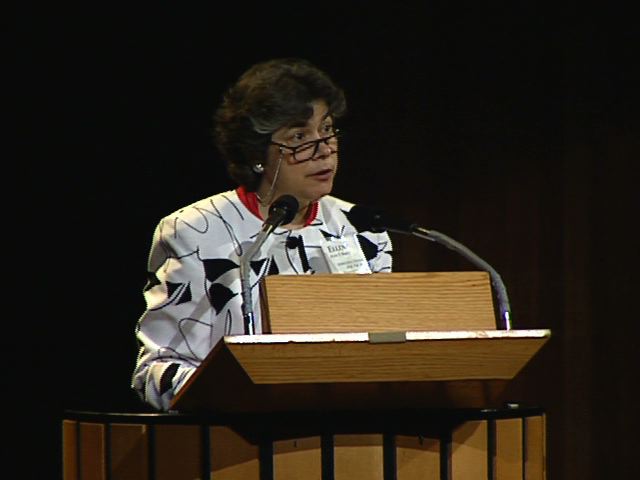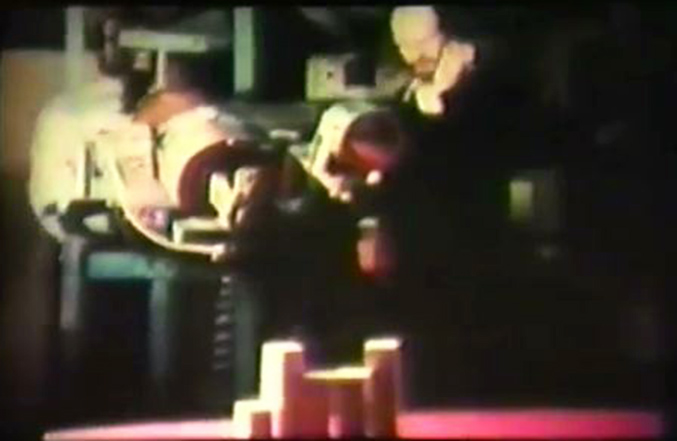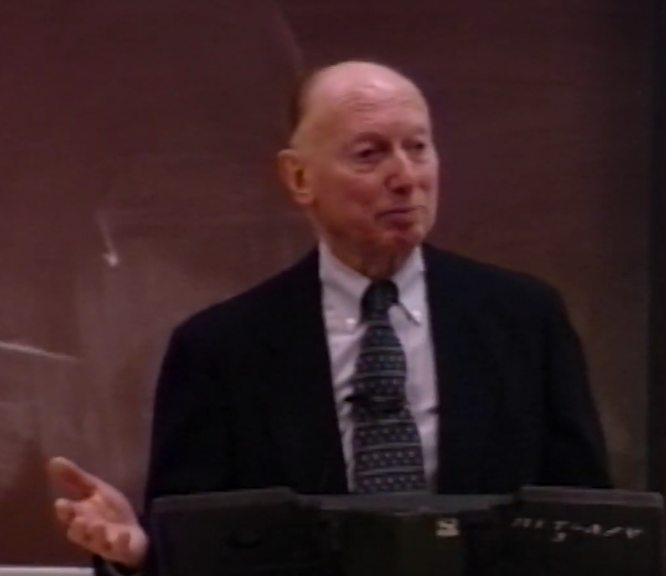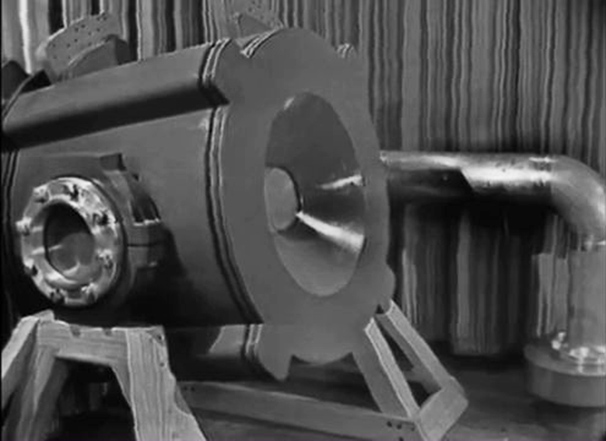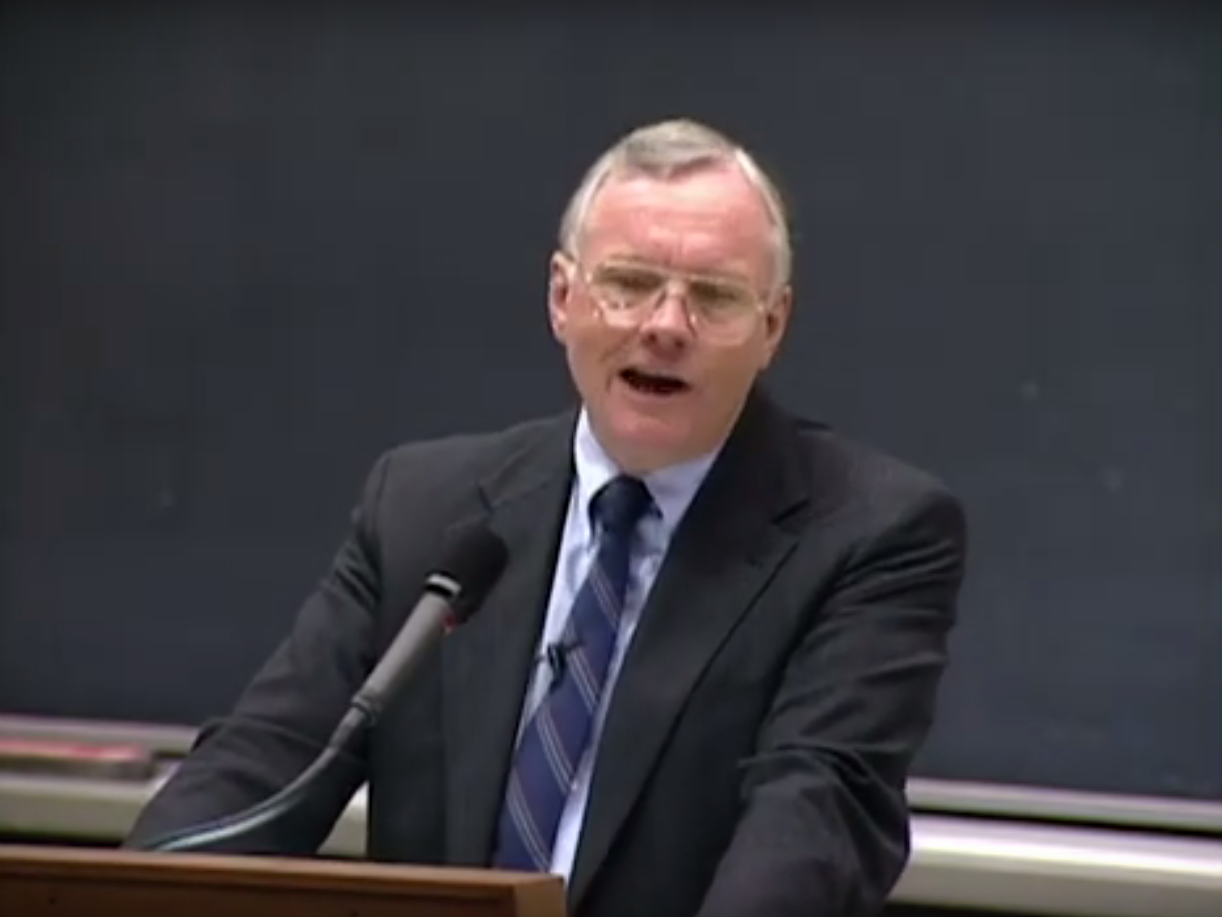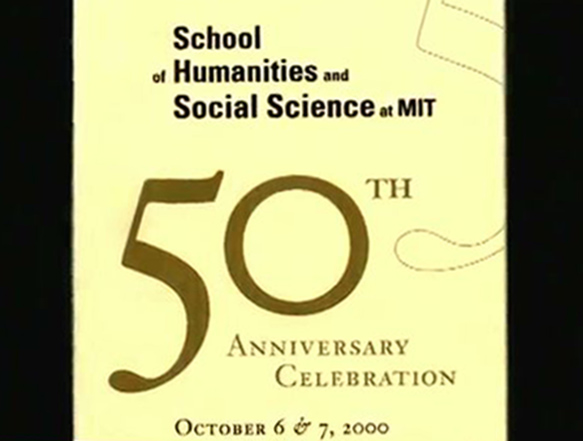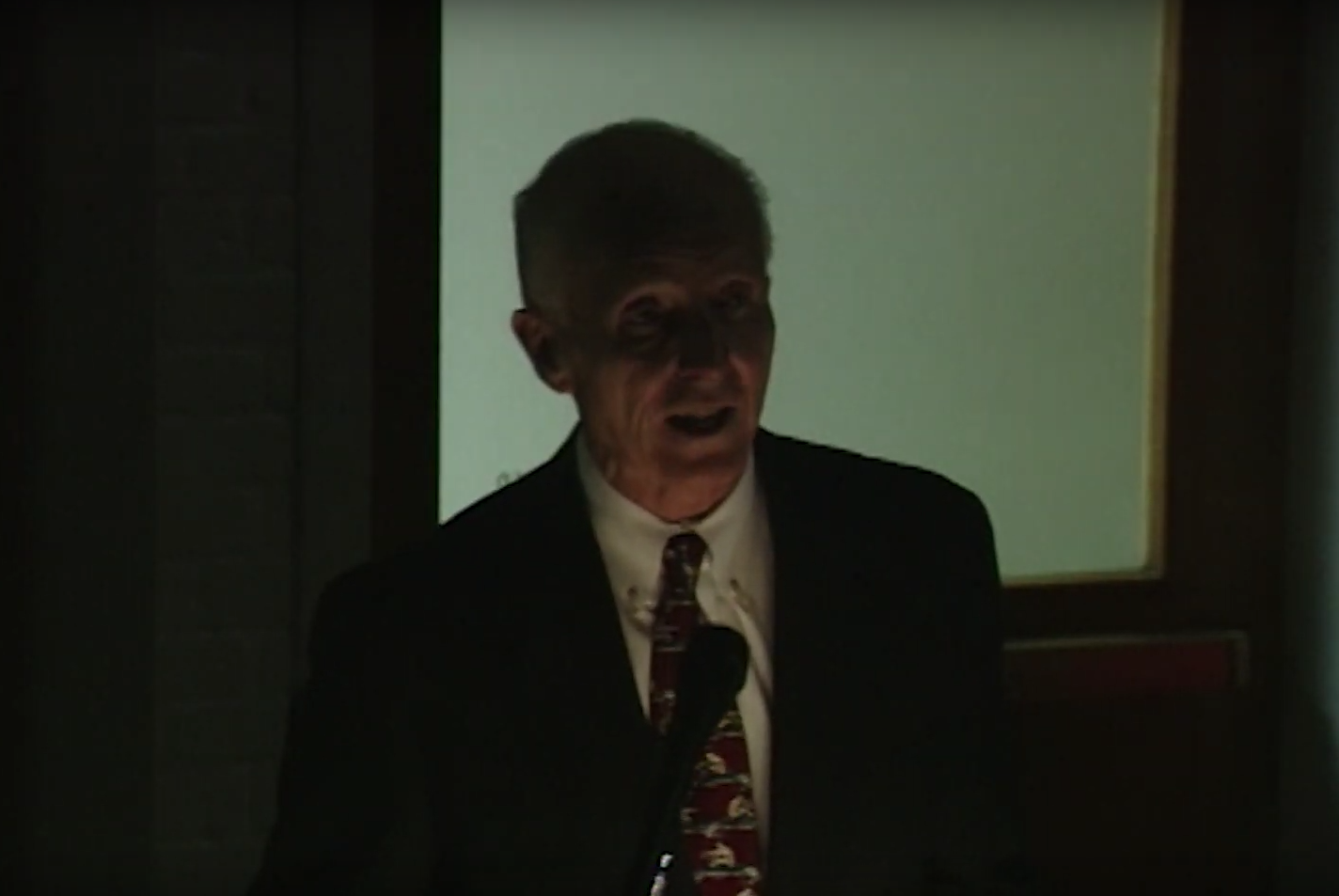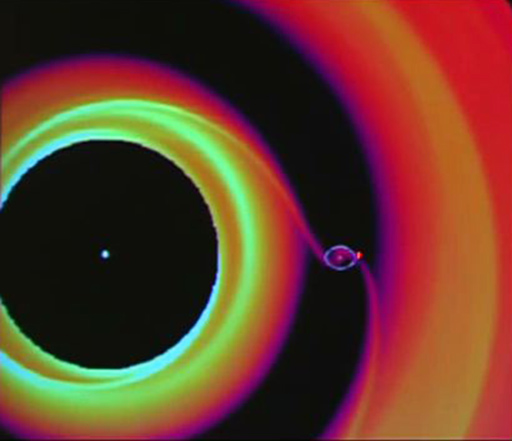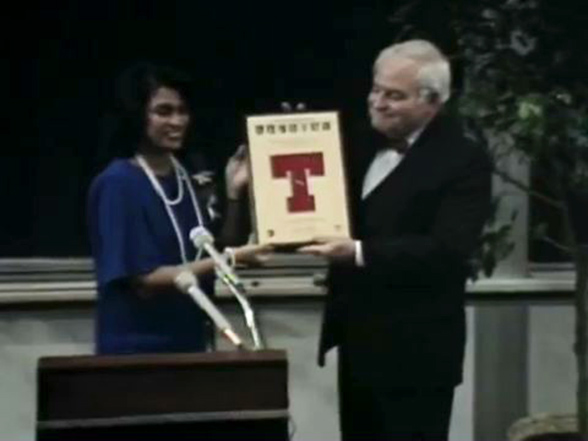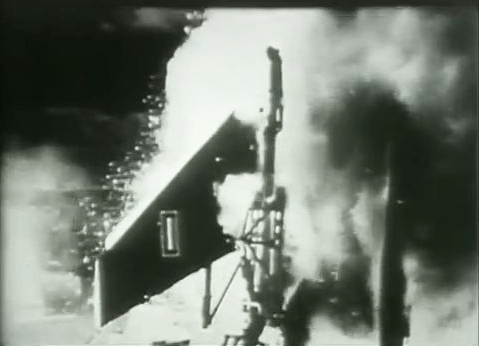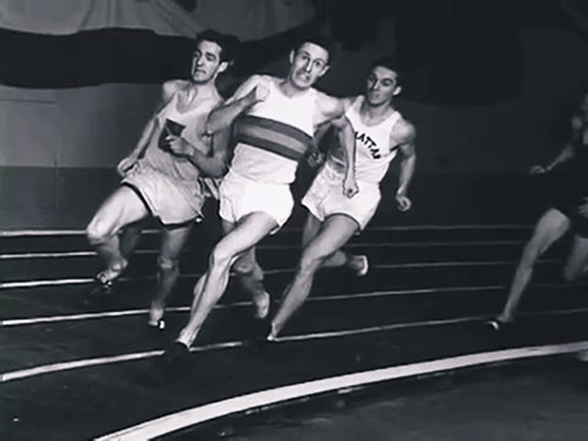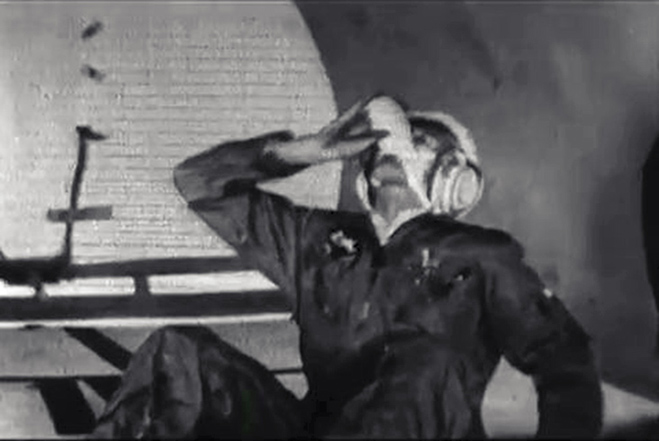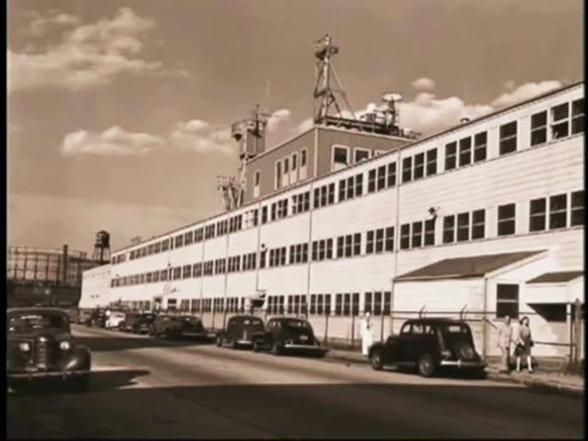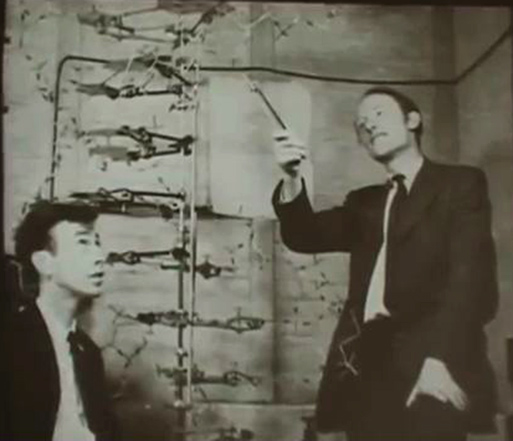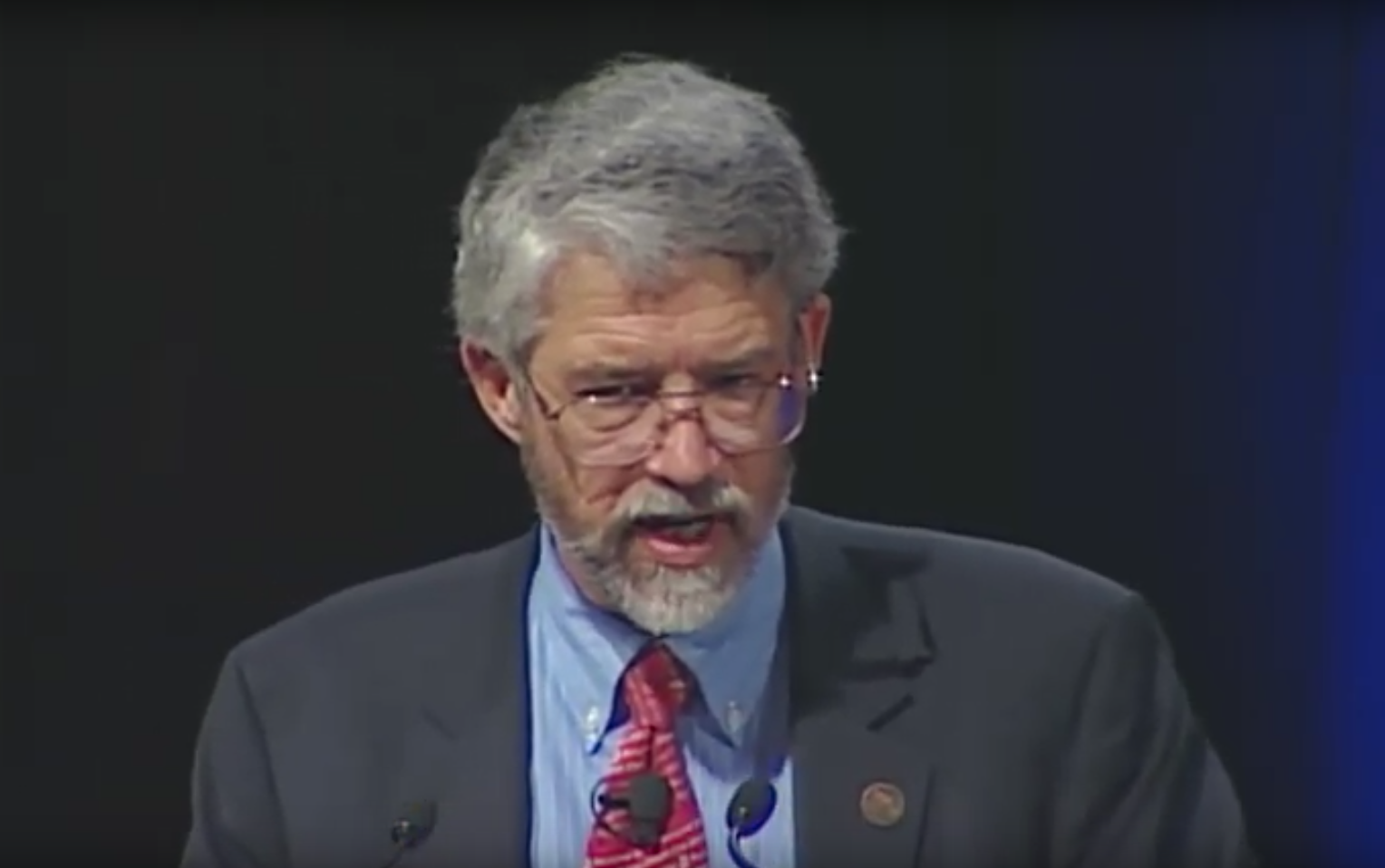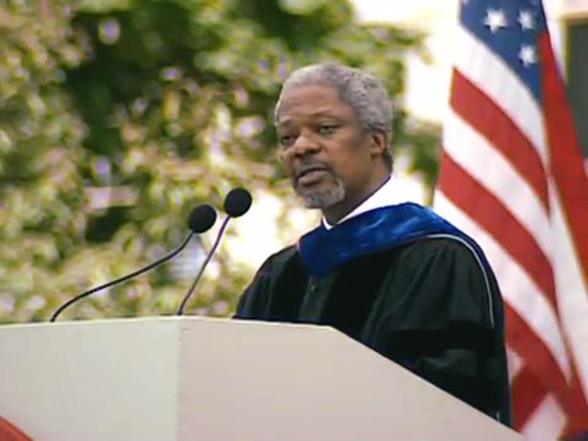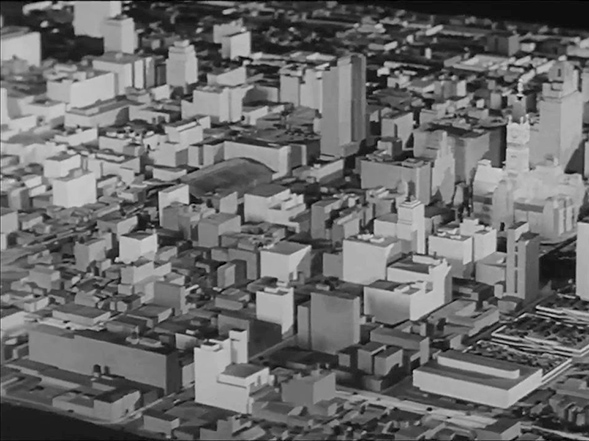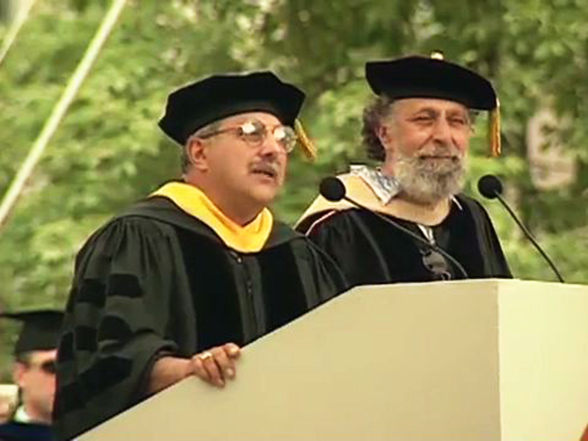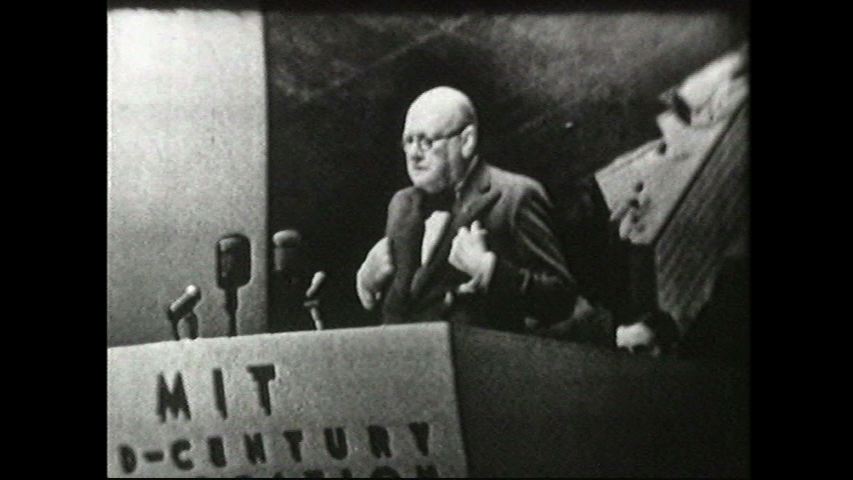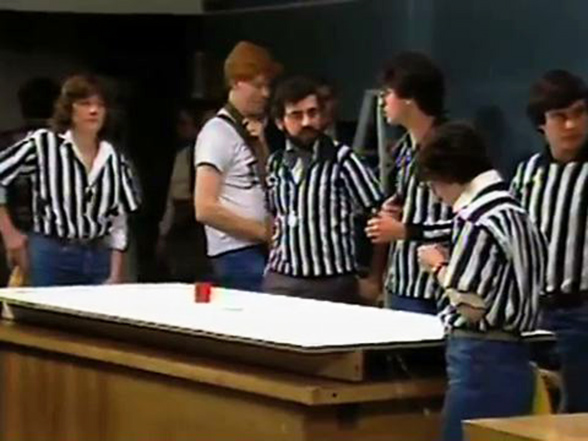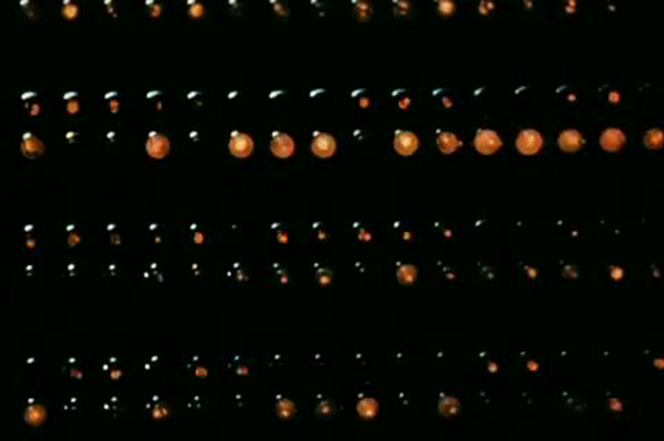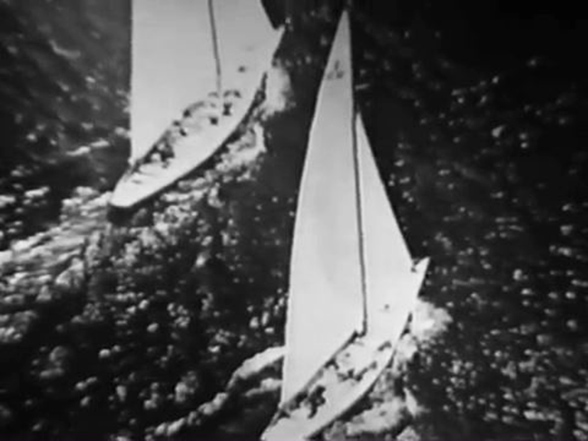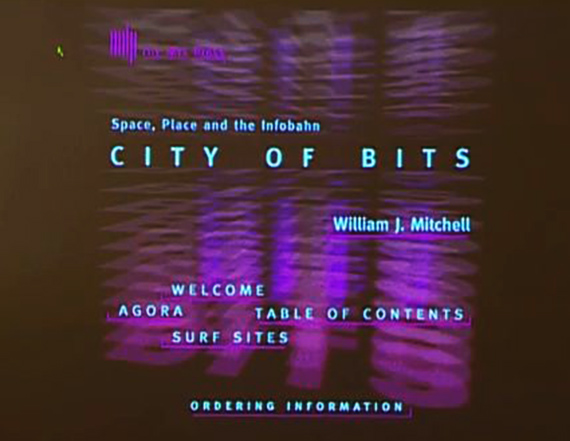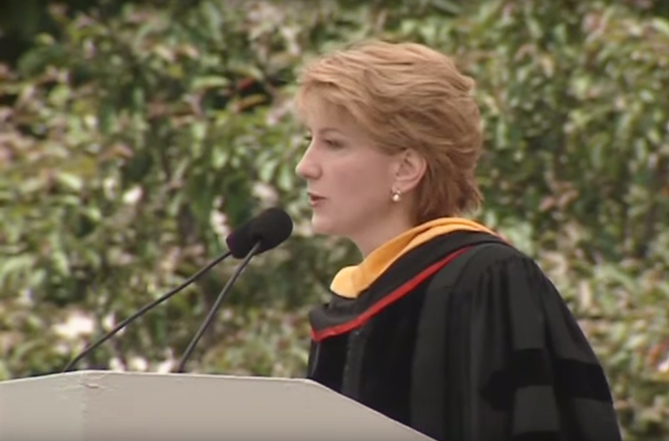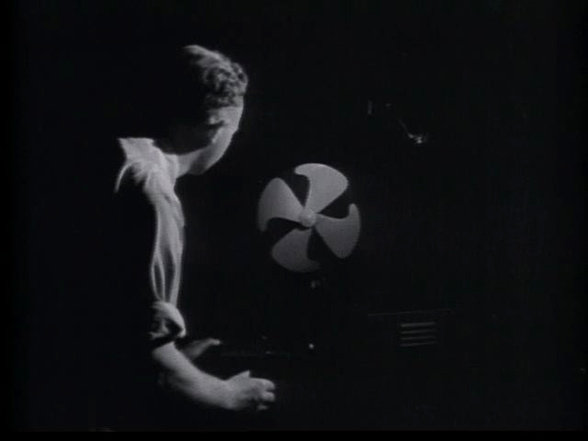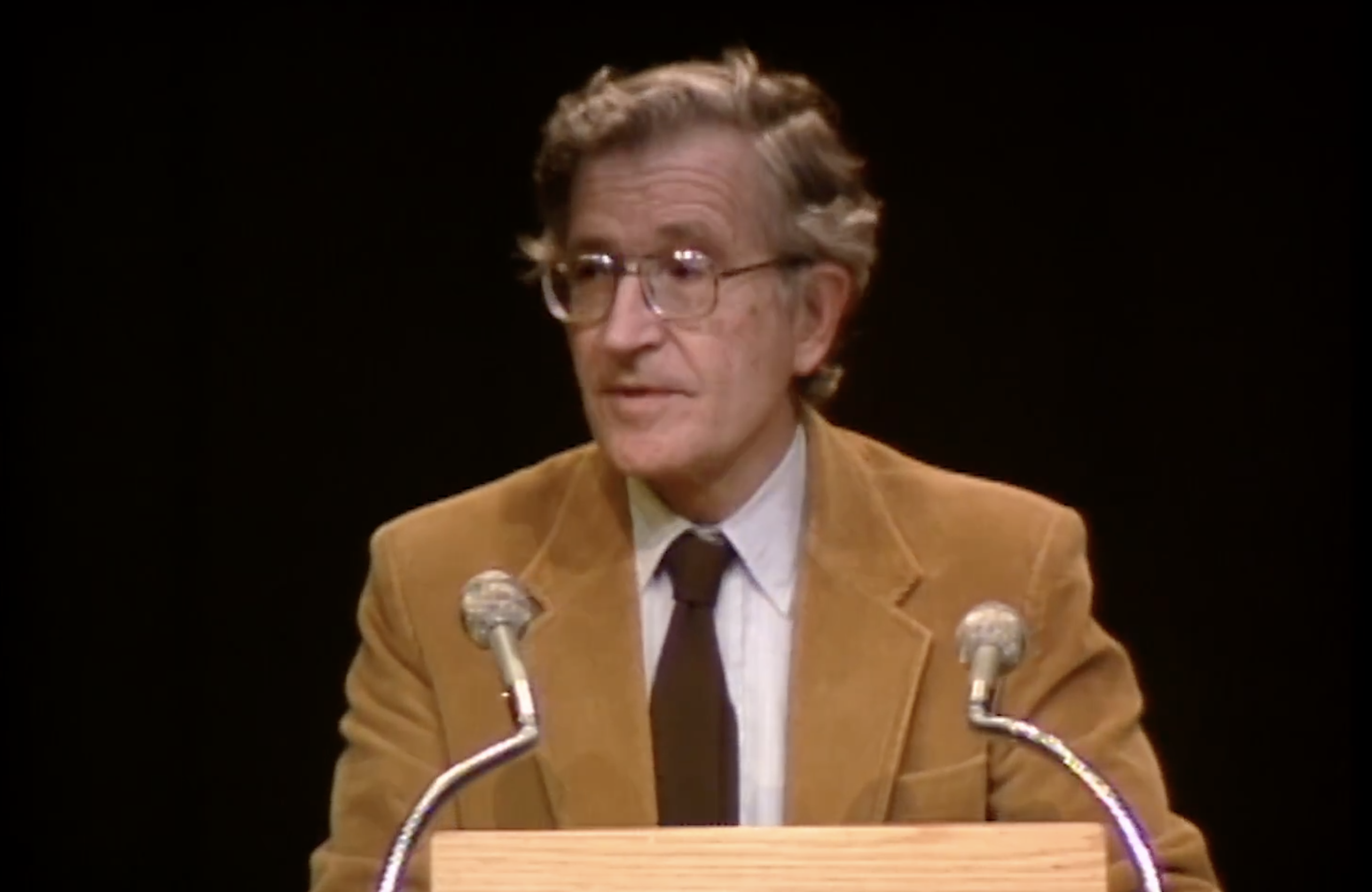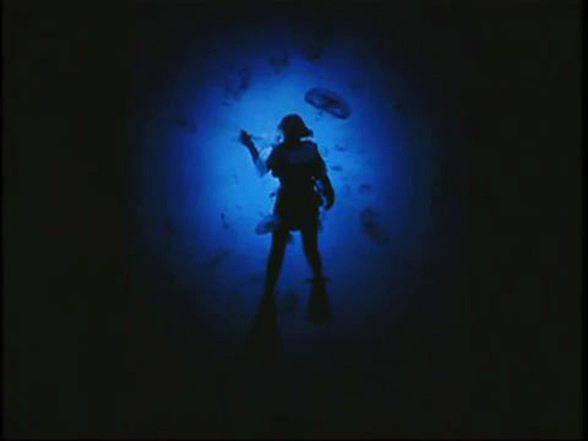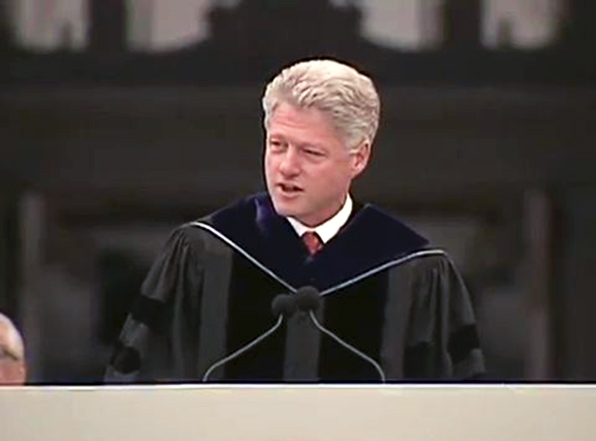MIT Science Reporter—"Food For Space Travelers" (1966)
JOHN FITCH: When John Glenn got hungry during its three-orbit flight in 1962, he simply opened the visor on his helmet and popped a high-energy tablet into his mouth. This pill, a few sips of water, and an occasional squeezing of baby food from a toothpaste container were more than Glenn actually needed for the 4 and 1/2 hours he was in orbit. The purpose of the meal was to find out whether man could even eat in a weightless condition. Meal time aboard those early Mercury flights was hardly more than a light snack. And even at that, it was considerably more sophisticated than the brown paper bag and thermos diet common to the earliest in-flight feeding during World War II.
Since 1961, food scientists have been hard at work studying and developing space foods and measuring their effects upon man. The problems, even for short flights, have been enormous. Yet, as we continue to large longer and longer missions into space, entirely new considerations must be met and dealt with in planning and providing food for space travelers. How space food scientists are doing this is our story today on Science Reporter.
[MUSIC PLAYING]
Hello, I'm John Fitch, MIT Science Reporter. Today we're at the US Army Labs in Natick, Massachusetts for the National Aeronautics and Space Administration is supporting considerable research into the problems of space feeding. The care and feeding of an astronaut is, by no means, a simple proposition. Elaborate provisions must be made for a life-support system, in which man cannot only just stay alive, but can also function effectively while in space.
The temperature, both in the cabin and inside the space suit, must be kept within critical tolerances. The astronaut must have oxygen to breathe, and there must be systems capable of removing carbon dioxide, toxic gases, and other waste matter. There must be an adequate supply of water. The astronaut must have food. In many ways, this is the most challenging problem, since the amount he needs depends somewhat on what he has to do. Furthermore, he'll have no stove or refrigerator, no garbage disposal, and only a limited amount of space in which to store what food he will require.
Well, these problems of space feeding were imagine by Jules Verne more than a century ago when he wrote a very entertaining story about a voyage to the moon in a spacecraft called simply "The Projectile." Maybe because burn was a Frenchman and presumably appreciative of the good life, he didn't overlook the necessity of providing his space travelers with a menu, while it was rather more elaborate than we are able to offer our 20th crews.
NARRATOR: The breakfast began with three bowls of excellent soup, thanks to the liquefaction in hot water of those precious cakes of bullion prepared from the best parts of prime Argentinian beef. To the soup, succeeded some beef steaks, compressed by hydraulic press, as tender and as succulent as if brought straight from the kitchen of an English eating house.
The reserves of vegetables succeeded the dish of meat and was followed by some cups of tea with bread and butter, after the American fashion. The beverage was declared excellent and was due to the infusion of the choicest leaves, of which the emperor of Russia had given some chests for the benefit of the travelers. And lastly, to crown the repast, Ardan brought out a fine bottle of wine, which was found, by chance, in the provision box. The three friends drank to the union of the Earth and her satellite.
JOHN FITCH: It's unlikely that our astronauts will ever enjoy a meal like the one Jules Verne's crew ate. But to find out what scientific work has been going on in space feeding, we talked to Dr. Paul LaChance of the Manned Spacecraft Center in Houston, Texas.
DR. PAUL LACHANCE: We have here a variety of the types of foods available for both the Gemini and Apollo missions. Here, for example, are some rehydratables-- shrimp cocktail, which could also be a beef pot roast; potato soup, which could also be another powdered mixture, such as a pudding; and a beverage, a grapefruit drink, in this case, which could also be a cocoa.
JOHN FITCH: Just add water and serve.
DR. PAUL LACHANCE: That's right. The bites we'd have are like the beef sandwich, which could also be a chicken sandwich, a cheese sandwich; compressed items, such as a peanut cube, which could also be a cereal cube of some sort; and even a fruit cake.
JOHN FITCH: Well, you see, there are a quite a variety of items. I should think you could put together a fairly well-balanced diet for the astronauts.
DR. PAUL LACHANCE: Well, we do put a balanced diet together. However, it is based solely on empirical knowledge, or a good share of it is, in that it's based on the recommendations for the average American adult male.
JOHN FITCH: These might not be what you actually need in space?
DR. PAUL LACHANCE: Well, the fact is that we do not know the requirement for all nutrients for man here on Earth. An example of this is for vitamins-- certain vitamins-- and certain trace minerals, the recommendations are based solely on animal experimentation. In other words, there is no human data.
JOHN FITCH: And you need this kind of data, you feel?
DR. PAUL LACHANCE: Well, yes, especially when you can't extract anything from your environment. You're up there with-- you either take it with you, or you don't have it.
JOHN FITCH: I see.
DR. PAUL LACHANCE: So that one must study man and must study these nutrient requirements-- assess the requirement in humans under resting, or as we call it, basal conditions.
JOHN FITCH: This is just what you need to stay alive?
DR. PAUL LACHANCE: Exactly, and this will vary from individual to individual, and you must study that facet of the problem also. This is before you can introduce the elements of the new environment that you're going to have to deal with, for example the stresses that you're going to have to deal with in this new environment of spaceflight.
JOHN FITCH: What kind of stresses?
DR. PAUL LACHANCE: Well, let me show you. Here we see a series of stresses, as one might expect during a spaceflight. First, the effect of g-forces, as you would get on lift-off or on reentry, as done by centrifugation.
JOHN FITCH: This is the acceleration and deceleration during the flight?
DR. PAUL LACHANCE: Exactly. Here is a an impact test--
JOHN FITCH: Oh!
DR. PAUL LACHANCE: --as you would get on a hard landing, for instance. Here we see vibration. This occurs, especially on lift-off, in combination with the acceleration, and it may vary considerably with the type of booster.
JOHN FITCH: It wouldn't be as violent as that, I hope.
DR. PAUL LACHANCE: No, here at this level, we're seeing the establishment of tolerance limits. Here we see the effect of noise combined with a disorientation.
JOHN FITCH: Noise of the rocket motor?
DR. PAUL LACHANCE: Yes, and also just the noise of friction, as the, for instance, a [INAUDIBLE] function. Here is a study of altered atmosphere. Now this is a long-term type stressor. This will always be present, 100% oxygen at 5 PSI, for example, or even mixtures of gases that we're now studying.
Now this is an example of disorientation as one gets with tumbling, as probably well remembered in JT5. Especially when the power is off, the spacecraft tends to tumble.
JOHN FITCH: Oh, I see, and you're likely to get dizzy, I suppose if it kept it up.
DR. PAUL LACHANCE:, Well they probably don't notice dizziness. But you may be altering the vestibular apparatus, especially when you combine it with weightlessness, and this is the most critical, I think, and the least known factor of the spaceflight stressors, certainly the one of continual duration.
JOHN FITCH: I could see how some of those stresses might make you lose your appetite for a few hours. But do they really affect your need for food?
DR. PAUL LACHANCE: Well, the short durations stresses probably do affect your appetite momentarily, but I don't believe they necessarily would affect your total nutrient requirement over any extended period of time. However, certainly, those long duration stresses, the altered atmosphere, the weightlessness, and the radiation, which we didn't mention-- a continued exposure to radiation or bursts of radiation might singularly or in combination substantially alter nutrient requirements.
Therefore, one must study what nutrient requirements are under basal conditions, and then what they are with these stresses, either individually or in combination, and then redo the whole thing in the actual environment of space. Then, with this knowledge, we can truly say we've established realistic nutrition criteria for the development of food systems.
JOHN FITCH: To learn about research into nutritional requirements and how they are affected by the stresses of spaceflight, we talk next with Dr. Doris Calloway, Professor of Nutrition at the University of California at Berkeley.
DR. DORIS CALLOWAY: We really do know something about nutrients and nutrient requirements. But there are some gaps in our knowledge about qualitative things-- what things are essential and what aren't. And we have even greater gaps on quantification for an individual person. But really, we do know some things.
We get along with a limited amount of knowledge right here because we eat a wide variety of things, so some things today and other tomorrow, and a mixture of things for a given meal. Now with the astronaut population, we don't have this flexibility open to us cover our area of less than precise knowledge because we can only send a limited array of things with the men. And if we have forgotten anything, we don't have a chance to go back and add it, or for them to get out somewhere en route and pick it up on their own.
JOHN FITCH: What are these essential nutrients that they must have?
DR. DORIS CALLOWAY: Well, they're is the same nutrients that they sell in loaf of bread. It's protein for muscle and blood cells and hair, and minerals for your skeleton and some soft tissue functions, and vitamins to carry out metabolic processes, the regulators.
JOHN FITCH: If don't have these, you'll be in trouble eventually.
DR. DORIS CALLOWAY: Serious trouble, indeed you will be.
JOHN FITCH: Now, how do you find out what a human being actually has to have among these essential nutrients?
DR. DORIS CALLOWAY: the very best way is to go into the laboratory and find out what a representative group of people needs. In our case, for instance, we often work with students on the campus. Would you like to see how we go about this?
JOHN FITCH: Yes, I would.
DR. DORIS CALLOWAY: Sure. This is a group of test subjects, mainly students, in our penthouse laboratory at the University of California at Berkeley.
JOHN FITCH: Looks like a very luxurious way to do an experiment.
DR. DORIS CALLOWAY: The men enjoy it generally. You look out at the Golden Gate through the window, too. Here they are at the dining table, and here is a man doing graded treadmill work, which is a standard every day for every subject so that we can keep all things as constant as possible. And at the same time, he's learning his German, and he ploughs up at three-miles-an-hour on the constant treadmill.
This is bicycle work. And, in this case, we are just measuring the energy expenditure of the subject doing a known amount of work on the bicycle. By measuring how much oxygen he is using and how much carbon dioxide he puts out, we know what his energy expenditure has been.
JOHN FITCH: So you can relate all this extra work to the amount of food they take in.
DR. DORIS CALLOWAY: That's right, and we're interested then in how they handle their food metabolically, so that we analyze a lot of end products. And in these experiments, we're trying to determine total body losses, which means that we analyze things that people don't normally, like bath water and whiskers and this kind of thing.
JOHN FITCH: Once you know these basic nutritional requirements, is that all you have to send along with astronaut?
DR. DORIS CALLOWAY: No, the weight of these essential nutrients is really only a very small part of the total weight of food that we have to send. The protein, and vitamins, minerals wouldn't way more than three ounces, even if we were liberal about it-- perhaps as little as two ounces, if we're down to minimum. Now, the thing that determines this large bulk of food that we normally eat is our need for calories, for energy.
JOHN FITCH: Oh, what do we use that for?
DR. DORIS CALLOWAY: Well, for everything-- for staying alive. The basal rate is what you use for mental activity and heartbeat and breathing and just necessary body functions, which you can determine quite easily. The basal metabolism test I think you're probably familiar with.
JOHN FITCH: How many calories would that come to, let's say?
DR. DORIS CALLOWAY: It will depend on your age and size and sex and things like this, but somewhere in the neighborhood of 1,500 to 1,800 calories a day. And then in addition to that, whatever activities you carry out will demand some more energy. In case of the astronauts, probably a rather sedentary life, being an astronaut, about 2,500 calories a day or perhaps a little less than this even.
JOHN FITCH: Now, if you need these 2,500 calories, why couldn't you put this all into a pill and give that to them to take?
DR. DORIS CALLOWAY: You could, but you couldn't swallow the pill. The most energetic food that we could send would be pure fat, which would have nine calories in one gram. And at this rate, we'd need something over 1/2 a pound to provide the energy requirement, and that would be the size a hockey puck, and, you know--
JOHN FITCH: I see. Well, if this most energetic food is fat, could you make the whole diet out of fat then? Doesn't sound very appetizing.
DR. DORIS CALLOWAY: No, you couldn't for other reasons we already said. We needed protein and mineral and vitamins. And in addition to that, you can't just utilize fat by itself. You have to have some other nutrient burning along with it. Otherwise you get to feeling, oh, headachey and nauseous so that we must send some carbohydrate as well.
So we've got about two or three ounces of essential nutrients and perhaps two or three ounces more of carbohydrate, so we're up to six to eight ounces, plus the fat then to make up the rest of the calories. And chances are we wouldn't send even that much fat along because it's just not palatable. And if we sent anything like what you normally would prefer, as a composition, it will be something more than a pound of weight of dry food, plus all the water and oxygen and other critical nutrients that you need.
JOHN FITCH: Before spaceflight menus can be prepared, other considerations must be met. In order to find out about the development of food for space and the way it is packaged, stored, prepared, and eaten, we talked to Dr. Donald Westcott, Chief of the Cereal and General Product Section at Natick.
DR. DONALD WESTCOTT: The US Army Natick Laboratories and the food division has been working for a number of years on the development of food products for military rations. Many of the problems encountered in these developments are also applicable to some of the problems encountered in space feeding.
JOHN FITCH: Well, are there other special problems in space, I should think there would be, that you don't meet on the ground?
DR. DONALD WESTCOTT: There are a great many new problems, which we have had to overcome in development of food products. To illustrate these, we are severely limited in the amount of weight and volume that we can tolerate. Also, there are severe environmental stresses, such as acceleration, deceleration, high temperature, compression, and things like that.
To overcome some of these severe environmental problems, we have developed a series of nearly 50 different food items which can be used for space feeding. These can be divided into two major categories. They're a system of rehydratable foods, dehydrated by various means, typical of which is freeze-dried foods like these.
JOHN FITCH: Well, you can get some of these on the market now, can't you?
DR. DONALD WESTCOTT: Yes, they are beginning to become available commercially.
JOHN FITCH: What is this?
DR. DONALD WESTCOTT: This is freeze-dried peaches.
JOHN FITCH: This must be meat over here.
DR. DONALD WESTCOTT: Correct, that's meat and gravy.
JOHN FITCH: And some vegetables, I guess?
DR. DONALD WESTCOTT: Those are peas, and we have some corn. These are just samples of the type of items that are being used as freeze-dried items to be rehydrated. In addition, we have a great many bite-sized foods, which are compressed, dense, high-calorie source of foods, typical of which we have fruit cake, the sandwiches-- beef sandwiches-- and items like toast.
JOHN FITCH: Now, how can you eat something like toast in a spacecraft, without getting crumbs all over the capsule?
DR. DONALD WESTCOTT: Well, we've had to devise a system for coating the toast with a high-melting fat coating, in this case, to overcome the problem of crumbs and disintegration. Another system which we are working on is actually packaging the bite in an edible film.
JOHN FITCH: Oh, this isn't cellophane, then?
DR. DONALD WESTCOTT: No, by no means-- this is an edible film made from a starch product and can be eaten as is. In fact, it's actually nutritious.
JOHN FITCH: Now, I can see how you'd eat these bite--size items just by opening the package and eating them. But what do you do about these rehydratable items? You can't very well eat them of the plate with a knife and fork?
DR. DONALD WESTCOTT: Well, all the food comes packaged in a unit, such as this, which is a meal for one day-- a one meal for an astronaut. Inside we have these series of packages. This is an example of a rehydratable package. The astronaut cuts the end of the package off and then inserts the water gun, metering in the required amount of water to rehydrate the product.
JOHN FITCH: Speaking of adding water, I don't see how you really saving any weight, if you have to add the water back again before you can eat the food.
DR. DONALD WESTCOTT: That's correct. At present, we have to carry sufficient water, both for drinking and rehydration. But we're working on system, such as using the water from fuel cell byproduct for rehydration and drinking, and also systems for recycling water.
JOHN FITCH: Well, you have here-- this is grapefruit drink, right?
DR. DONALD WESTCOTT: Yes, this is grapefruit drink.
JOHN FITCH: Five ounces of water, two to five minutes-- what's that for?
DR. DONALD WESTCOTT: Well, it requires a certain length of time to ensure that the material is, in this case, the beverage is dissolved in the water. The package is needed to aid rehydration, and the one-way valve prevents water from flying around the capsule.
JOHN FITCH: If that's a one-way valve, then how do you drink the grapefruit juice?
DR. DONALD WESTCOTT: After it's rehydrated, the other end is cut, and a feeding tube is removed from the package, where the astronaut inserts this directly in his mouth.
JOHN FITCH: You squeeze it like toothpaste?
DR. DONALD WESTCOTT: Correct, and drinks the product-- actually quite delicious.
JOHN FITCH: Now, what do you do with this after you're through? You can't very well throw it out the window.
DR. DONALD WESTCOTT: No, attached to the package is a germicide pill, which is inserted into the package after the product is eaten to prevent residual decomposition and odor formation and fermentation and the like. Then the package is merely wrapped up and put in the disposal container.
JOHN FITCH: Knowing the kinds of foods which can be prepared, stored, and used in the spacecraft, and the nutritional requirements of the astronauts, dietitians can begin to prepare menus that are suitable for space. To learn more about menu preparation and acceptance testing, we talked to Mrs. Mary Klicka, a nutritionist at Natick.
You know, Dr. Calloway has told us about these essential nutrients we require and the calories we need for energy. And Dr. Westcott has displayed some 50 different, what I assume are, nutritious items to choose from. Now how do you put all this information together and come up with a menu?
MARY KLICKA: Well, of course, NASA gives us requirements for the menu, and then the length of the mission is quite important to us, since it, more or less, determines what variety we need on the menu. The longer the mission, the more variety we need to ensure acceptability and consumption throughout the flight.
JOHN FITCH: And so you wouldn't want to use the same menu every day. Even if it were nutritious, they'd get bored with it.
MARY KLICKA: That's right. Cube or volume of the fluid is important too. This is also related to the length of the mission. The longer the mission, the more concerned you are with the amount of space the food takes. For example, in rehydratable foods, while they're very acceptable, they require much more cube than the bite-sized items.
JOHN FITCH: I see. Now, you say, "acceptable." Do you know what the astronauts like in the way of food?
MARY KLICKA: We get their preferences before flight. We actually check out a menu with them, to be sure that they will eat and like everything on the menu before it is accepted for flight use.
JOHN FITCH: Well, now, what other factors do you have to take into consideration?
MARY KLICKA: Texture of the foods, good menu combination-- we're as concerned with feeding the astronauts good-sounding combinations of foods as the housewife is in feeding her family to eat.
JOHN FITCH: Oh, I see. You wouldn't want to serve peas and chocolate sauce, no matter how nutritious they were.
MARY KLICKA: Just doesn't sound good.
JOHN FITCH: All right.
MARY KLICKA: We're also concerned with low gas production-- foods that don't cause distress. We're concerned with color of food, and we're concerned with the acceptability of the food.
JOHN FITCH: Now, how do you find out, other than actually trying this food on an astronaut, it acceptability?
MARY KLICKA: We test each individual item separately. In fact, these are the booths, behind this wall, where the testing is done. The tester is given a sample of the food. Then he tastes the food, and then he rates it on a card, telling just exactly how much he likes or does not like this particular food. Then we average these values, and we find out how the average consumer would like this particular type of food. Would you like to taste this?
JOHN FITCH: All right.
MARY KLICKA: It's a peanut cube. The astronauts like those.
JOHN FITCH: Mm, very good. Well, thank you very much.
This is the life-support system's evaluator at Wright Patterson Air Force Base in Ohio. It was designed to aid in research conducted to determine precise nutritional requirements, to evaluate foods planned for long-term space flights, and to investigate personal hygiene procedures. It is manned by four subjects, two of whom are required to wear an unpressurized spacesuit constantly for 16 days.
The subjects activities were under constant surveillance 24 hours daily. Temperature, humidity, and other environmental variables were checked periodically by the chamber operators. All diets were scientifically formulated, and each portion was weighed to the nearest tenth of a gram in order to determine the precise balance between intake and waste. Once daily, food was passed into the evaluator by way of its airlock, waste matter was disposed of in the same way.
A three-day diet cycle of pre-cooked dehydrated food with bite-sized compressed items and a matching freshly prepared diet were compared for nutritional value as well as for subject acceptance. The dehydrated foods were packaged in metal foil envelopes to retain flavor and freshness. The results obtained show that dehydrated and bite-sized foods were very acceptable for potential use in aerospace systems.
In addition to testing the food itself, the packaging, storing, preparation, and disposal means are also tested to determine how well they will work in the spacecraft. As we've seen, foods for space flight may be bite-size, freeze-dried, or dehydrated, as shown here. Each item is fully tested by a suited astronaut in a spacecraft simulator before the food item is approved for use.
Dehydrated foods must be reconstituted with water before consumption. The supply of water comes from the fuel cell, of which water is a byproduct. A hose with the nozzle is located between the astronauts in this Gemini capsule mockup. As soon as the astronaut has finished his meal, he inserts a special germicide pill, which comes with each bag, into the opening and mixes it with the remaining food to retard spoilage. The remains are then stored for the balance of the trip.
Here the astronaut is opening a packet of bite-sized items. These may be either freeze-dried or compressed foods. Each item is thoroughly ground-tested in these mission simulators before being allowed to go on an actual mission. Under these situations, technicians can determine packaging faults, convenience in handling, stowage problems, compatibility with other systems, and general reliability, before the item is sent into space.
Present technology of space feeding is well enough developed for missions of even a month's duration. But new problems begin to arise when considering an extended mission to perhaps another planet. To find out about research in this area, we talked, again, to Dr. Paul LaChance.
DR. PAUL LACHANCE: For extend mission, that critical factors are space, weight, and power. This being the case, the idea or the concept of reusing what you have in the spacecraft becomes the optimal approach. First, you would try to recycle the water, then probably the oxygen, by, for instance, recovering the CO2 and extracting the oxygen from it. And the regeneration of food becomes an important factor.
However, this has to be taken in a series of steps. Probably the first approach would be to compress foods, which we are now doing, and therefore reduce the volume for storage. Then we would try to introduce items such as these prototype foods here, the nutrient-defined diet. This would be a diet with just the essential ingredients, keyed to the man's requirement.
JOHN FITCH: You'd leave out the fibers and other things in food that you can't digest anyway?
DR. PAUL LACHANCE: Right, correct, and we would make it available as powder. It can be reconstituted and made into a liquid to drink, or it would be the identical ingredients in the form of a candy or even a cookie. From that step, you could introduce into this synthetic compounds, synthesized essential amino acids, for instance, or even foreign compounds, such as some products, byproducts of the petroleum industry.
JOHN FITCH: These might actually have more nutrient value per cubic inch than nature's own foods?
DR. PAUL LACHANCE: That's right. That would be the purpose of doing this. And, of course, lastly, one would get into the true closed ecological system in the biological sense, which would be the use of algae, fungi, higher plants, bacteria, or a combination thereof, where you would have, essentially, a small farm in space, or a microcosm, as we call it. You would produce your own food, and you might, of course, concurrently regenerate oxygen and pick up CO2.
JOHN FITCH: Thank you very much, Dr. LaChance.
Today we've been visiting the US Army Natick Laboratories in Natick, Massachusetts. Our guests have been Dr. Paul LaChance, of the Manned Spacecraft Center in Houston, Dr. Doris Calloway, of the University of California at Berkeley, and from the Natick Laboratories, Dr. Donald Westcott and Mrs. Mary Klicka.
I'm John Fitch, MIT Science Reporter.
[MUSIC PLAYING]
